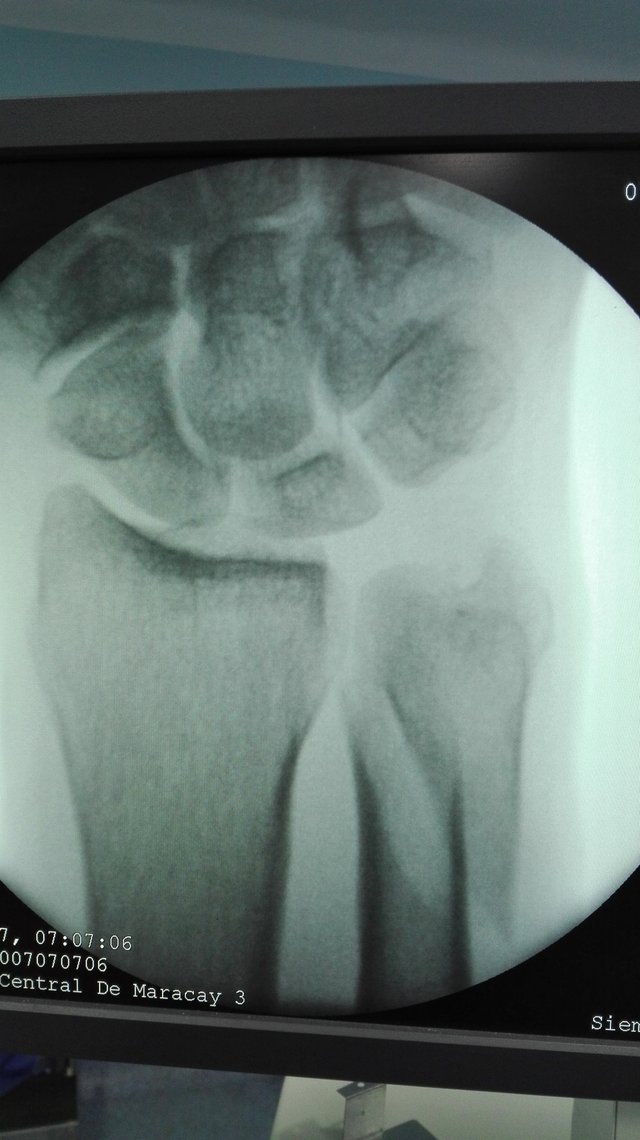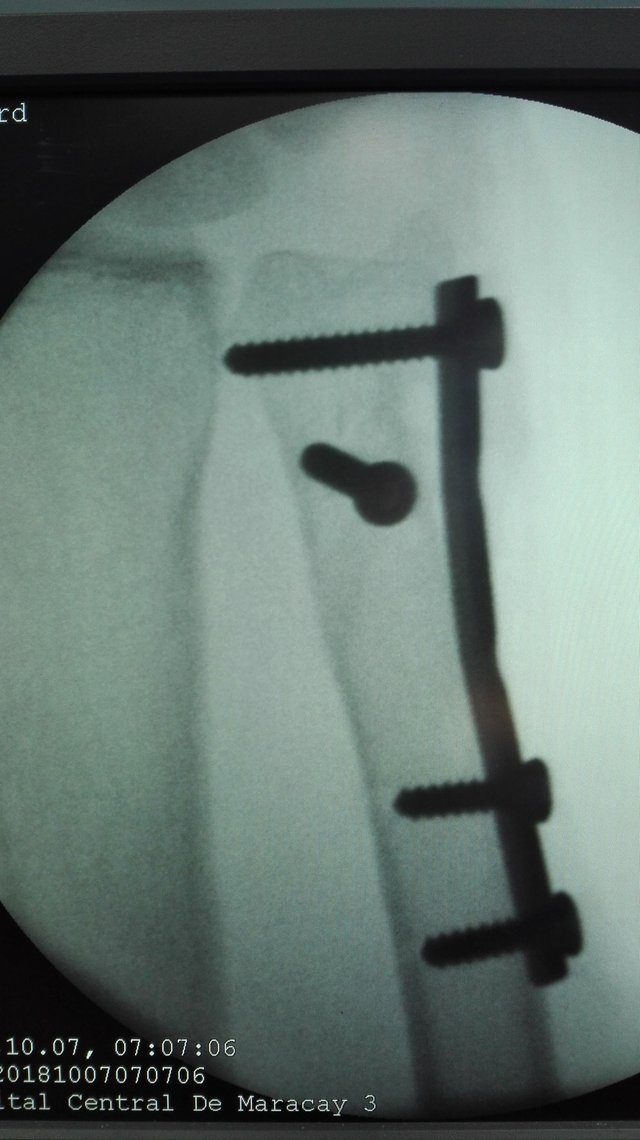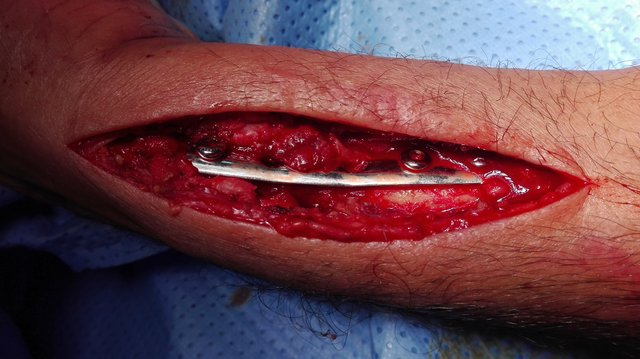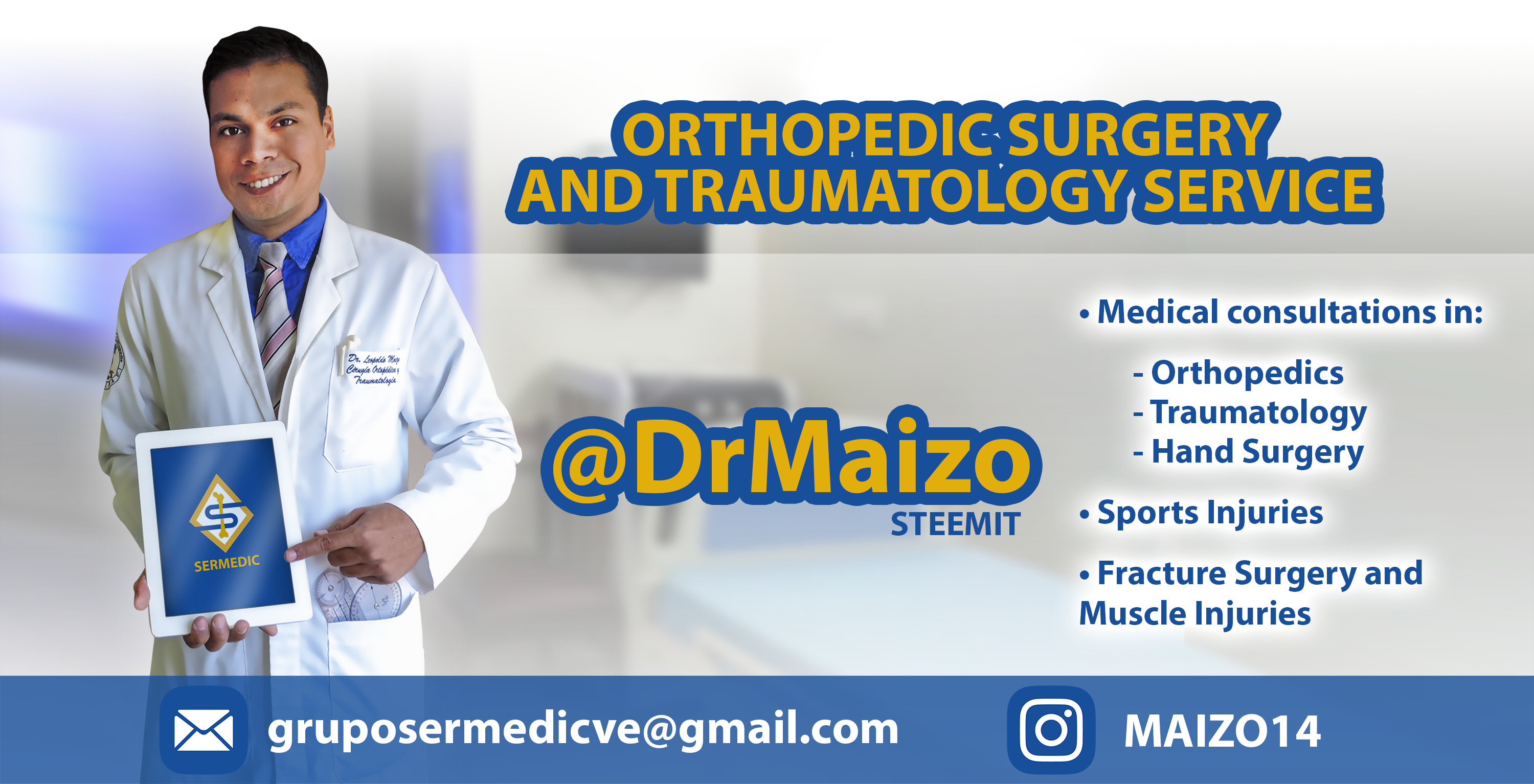Today's Fracture: The Cubit

The ulna
Recently we had the opportunity to have surgery for a fracture of the ulna, they are not very frequent in isolation as most of the time they present together with fractures of the radius. The osteosynthesis of these fractures may seem easy but any error can make it difficult for patients to perform their manual tasks in the same way as before. Today we will talk about: The Cubitus.
Anatomy
The Cubitus, also called ULNA, it is a long bone that has two extremities and a body. It forms, together with the radius, the elements that give bone support to the forearm segment.
Characteristics:
Upper Extremity
It has a large forward-facing articular surface, the sigmoid major cavity, intended to articulate with the humeral trochlea.
In the shape of a crescent, the major sigmoid cavity is covered in its entirety by a ridge that delimits two slopes towards the medial and lateral sides. The crest and both slopes constitute a two-water roof-shaped articular surface that adapts to the articular surface of the humeral trochlea.
From the antero-inferior vertex of the major sigmoid cavity emerges a salient, the coronoid process, which ends in an acute vertex which, in the flexion of the elbow, is housed in the coroniodic fossa of the humerus.
Below the coronoid process is the tuberosity of the ulna where the anterior brachial muscle is inserted.
Laterally, an articular surface extended from front to back constitutes the minor sigmoid cavity, in which the lateral articular surface, present in the head of the radius, is applied.
Towards the back is raised the voluminous and quadrangular projection called olecranon, from which its anterior and superior part bent forward forms the peak of the olecranon that in the extension movements of the elbow is housed in the olecraneana fossa of the humerus. The anterior face of the olecranon constitutes the vertical portion of the major sigmoid cavity. While the posterior face is rough, to give insertion to the triceps brachial muscle.
Lower Extremity
The diaphysis of the ulna is thinned little by little downwards and ends in a small more or less spherical thickening, the articular circumference of the ulna, which in its lateral part corresponds to the ulnar recess of the radius to form the lower radiocubital joint. Medially there is a cylindrical protrusion with posteroinferior direction, it is the styloid process of the ulna.
Body or diaphysis
It's shaped like an elongated triangular prism. In the upper half of the anterior face is the nutrient hole, directed towards the elbow. The lower quarter of the same face is rounded and lends insertion to the square pronator muscle. In the posterior face, in its upper part, there is a rough surface for the insertion of the anconeous muscle.
The interosseous edge is thin and sharp, into which the interosseous membrane of the forearm is inserted. In its upper part it forks to go to the two ends of the minor sigmoid cavity. The long supine muscle is inserted into the articular surface.
Ulna lesions
The most common ulna lesions occur in the area near the wrist. If a person falls and puts his hands to avoid hitting his head, the ulna will receive the stress of the impact and may fracture if the force exceeds its elastic resistance. This injury can occur in conjunction with others, such as a radius fracture, dislocation of the wrist, dislocation or distortion of the elbow and the so-called Colles fracture, among others affecting the bones of the forearm, wrist or hand.
Although ulna fracture is very common in older people, age is not an exclusive condition for this type of injury. There are several factors that can affect the characteristics of a fracture of the ulna, since two apparently equal accidents differ in the force of the impact, the angle of the blow, the age of the subjects, and so on. With respect to the type of fracture, it is possible to differentiate between coronoid process, stress, avlusion, displaced, comminuted, incomplete and olecranon.
Broadly speaking, we can speak of two types of ulna fractures:
stable:
when the displacement of bone fragments does not reach 30%. Also in this category is the so-called fracture of the green stem, in which the cortex and the periosteum between the bones are not damaged (these are necessary to block rotation);unstable:
when the displacement of bone fragments does exceed 30% or form an angle greater than 10 degrees. Another possibility is a fracture that affects the cortex between the bones. In this case there may be other injuries that accompany the picture, such as dislocation of the elbow and fracture of the radius.
Tendinitis
is an injury that occurs when the tendons are overused. If we focus on the wrist joint, we can differentiate two classes: posterior ulnar tendinitis and anterior ulnar tendinitis.The anterior ulnar is a muscle found in the forearm, and its original tendons are in the humerus and ulna; the posterior, on the other hand, has its insertion tendon in the posterior face of the fifth metacarpus and the original, in the lateral face of the ulna. Although the location of each lesion is different, both are treated in similar ways.
If you need recommendations or help in orthopedic surgery and traumatology do not hesitate to contact me.
Dr. Leopoldo Maizo - Orthopedic Surgeon
If you want to read more I invite you to visit my page:
Firma diseñada por @themonkeyzuelans, contáctalos vía Discord "themonkeyzuelans#9087"
Great projects from the Steemit community:
- My Fundition campaign: https://fundition.io/#!/@drmaizo/6f88ggj8h









.png)
This project is being supported by @Fundition
Fundition is a next-generation, decentralized, peer-to-peer crowdfunding and collaboration platform, built on the Steem blockchain.
#upfundition and #fundition tags on Steem represent the projects that are started on https://fundition.io.
Are You Prepared to Make the World a Better Place too?
Read the full details of Fundition Fund program
Learn more about Fundition by reading our purplepaper
Join a community with heart based giving at its core
Great informative post.....
I was wondering if muscular strength will help avoid certain fractures?
Of course, as more muscle mass develops, it acts as a defense mechanism for impacts of any kind. In addition, even after a fracture, it is much more appropriate to reintegrate those who develop muscle strength than those who do not.
Thank you.... You have confirmed my thoughts.
Congratulations @drmaizo! You have completed the following achievement on the Steem blockchain and have been rewarded with new badge(s) :
Click here to view your Board of Honor
If you no longer want to receive notifications, reply to this comment with the word
STOPDo not miss the last post from @steemitboard:
buen post, saludos!! te segui, si deseas ve mi contenido y sigueme, animate!
Hola gracias, igualmente, puedes contactarme por discord. Saludos